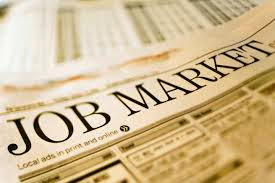Hi Washington Can't Walk Away From Cairo!.

An Egyptian man on horse cart rides past a huge banner for Egypt's former army chief Field Marshal Abdel Fattah al-Sisi in downtown Cairo, May 6, 2014. Egyptian presidential frontrunner Abdel Fattah al-Sisi on Monday appeared to rule out reconciliation with the Muslim Brotherhood movement, raising the spectre of a prolonged conflict with a group he said was finished. REUTERS/Mohamed Abd El Ghany (EGYPT - Tags: POLITICS ELECTIONS) - RTR3NZFA,CAIRO, EGYPT - MAY 23: Supporters of president candidate former Minister Defense Abdel Fattah el-Sisi organize an elective campaign before the presidential election (26-27 May) in Cairo, Egypt on 23 May, 2014. (Photo by Mohamed Hossam/Anadolu Agency/Getty Images).
As Ambassador to Egypt during the lead-up to the first Gulf War, I had the opportunity to witness what an important partner Egypt was in advancing U.S. security interests and regional stability. During the conflict to liberate Kuwait, Egypt contributed the fourth largest contingent of troops to the international coalition. Much of the American and allied deployment flowed through Egypt’s airports, airspace and the Suez Canal – all with the full cooperation of the Egyptian government. Egypt mobilized the majority of the Arab world in the defense of Kuwait, a vital contribution to U.S. diplomacy.
.jpg)
Egyptian and American cooperation during the Kuwait crisis was the result of a close relationship that began in 1973, following the October War between Israel and its Arab neighbors. During the Cold War, this cooperation was a vital factor checking Soviet influence in Egypt and the region. It led to peace between Egypt and Israel, which has lasted over 30 years.
Cooperation during the first Gulf War continued thereafter. It is hard to imagine how the US could have intervened in Iraq and Afghanistan without Egypt’s cooperation.
.jpg)
Today, however, our strategic relationship with Egypt is at an inflection point that could have grave ramifications for decades to come if the U.S. fails in its responsibilities as a partner during Egypt’s current transition, political transformation and effort to quell violence.
I follow events in Egypt closely. What is happening there gives me hope and concern. On balance, I am convinced that Egypt will work through its present challenges and emerge a stable and potentially a more democratic nation. That said, I am not as sanguine about the future of the U.S.-Egypt bilateral relationship.
.jpg)
It is clear that Egypt has entered a new phase in its history -- a phase in which Egypt will operate more independently, guard its sovereignty more jealously, and seek to expand the international partners with whom it cooperates. Public attitudes will affect government policies; this was not the case during the Mubarak years. The United States has not yet fully appreciated that there is no turning back in Egypt – not to the Mubarak era nor to the time of the Muslim Brotherhood. Egyptians seek order, having suffered through three years of chaos. But they want that order to be just. In their quest for stability, they seek understanding from their friends, notably the United States. Thoughtful Egyptians and the public at large do not believe we are giving Egypt the hearing it deserves.
.jpg)
I also do not believe we have assimilated the Egypt that is emerging into a regional strategy which advances core American interests. Managing the Egyptian relationship in the coming years is essential to our future in the region and to Middle East peace. It is likely to test the skills and talents of our best diplomats.
The U.S.-Egyptian relationship remains strategically important. None of the regional problems vital to American national interests can be successfully addressed without Egypt. These include calming the situations in Syria, Libya and Sudan; managing Nile River water resources; reassuring the Sunni Arab world, especially the Gulf states, that they are not alone in dealing with Iran; continuing efforts toward regional non-proliferation; and, of course, Arab-Israeli peace. Solutions to each of these issues may appear difficult today, but they will remain important to the United States for years to come and cooperation with Egypt will be essential. We need a strong relationship with Egypt and in the years ahead that means with those who hold and will continue to wield power in Egypt.
.jpg)
There is criticism in this country about events in Egypt and for good reason. We stand by our responsibilities as a protector of human rights. But Egypt is trying to deal with violence. Our concerns do not hold a candle to the strength of Egyptian feeling about American policies. We must not let anger get the better of our judgment. No issue today is more sensitive than the symbols of our relationship -- our military and economic assistance relations. Delays in our assistance are interpreted as deeply unfriendly, especially when Egypt is facing an insurgency in the Sinai. This is unfortunate. When we need a strong, cooperative tone to the relationship, our current posture is seen as uncaring.
.jpg)
Administration officials and members of Congress today are carefully considering the future of assistance to Egypt, including the recent notification that President Obama intends to release certain equipment to Egypt. While this debate is occurring inside the Beltway, it is critical that American policymakers and politicians look at the U.S.-Egypt bilateral relationship in the context of our long term, strategic interests and allow the military and economic aid we have promised to go forward.
.jpg)
















.jpg)
.jpg)




.jpg)
.jpg)
.jpg)

.jpg)



.jpg)
